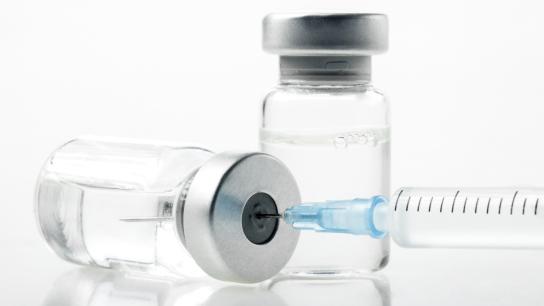
We can’t think of anything more exciting than a blog post marrying science with self-improvement, can you? Which is exactly why today, we’re going to geek out on Botox . And we’re going to start by straight up telling you that, no, you do not know everything about the beloved neurotoxin and its brethren (Xeomin, Dysport). In fact, we bet you don’t know the half of it.
If you’re considering having anything injected into your body, it’s always a good idea to understand all the realities behind said substance. Realities like what Botox is, the deal with dilution, how Botox works and why you should only get Botox from an experienced and licensed practitioner—these things matter. So buckle up, ‘cause this information train is leaving the station.
What is Botox, really?
First off, raise your hand if you know what Botox is. (Every single hand, across the universe, shoots up with flash mob synchronicity.) Oh sure, you might know the basics—Botox and "its buddies": are injectables used to treat wrinkles, migraines, muscle spasms and hyperhidrosis (excessive sweating)—but there’s so much more. (So go ahead and put those hands down, eh?)
Collectively, these types of injectables are called neuromodulators—the neuro- part deriving from the fact that they’re made from a naturally occurring neurotoxic protein produced by the Clostridium botulinum bacterium. This bacterium is called botulimun toxin—referred to in certain circles as a “miracle poison.”
Poison? Yes. Sort of. While this bacterium is one of the most dangerous chemicals known to man, and infection with it can cause botulism, the botulinum toxin used in your doctor’s office is perfectly safe (both botulinum toxin A and B are approved for human use.) All neurotoxins come to your provider a powder form. It’s then diluted with saline in order to “water down” it’s noxious capabilities, at which point it becomes less “poison” and more powerful therapeutic and wrinkle busting wunderkind.
How does Botox work?
Glad you asked. There are three trusted neuromodulators on the market today—Botox, Xeomin and Dysport . They essentially do the same thing to varying degrees, which is “freeze” the muscle that it’s injected into. Once the correct amount of neuromodulator is injected, it starts to prevent the release of the neurotransmitter acetylcholine from axon endings at the neuromuscular junction, causing flaccid paralysis. What? In other words it blocks any communication between the brain, nerve and muscle. You know, “freezing” the area. So your brain would make a polite request, “Left eyebrow, please rise a quarter of inch.” And your muscle would respond with a curt, “No thank you.”
Science Bonus: Since neuromodulators only block the transmissions communicating motion and do not block transmissions communicating feeling, you get to keep the sensation of touch in the area. So that's nice. And since the “freezing” ability of neuromodulators eventually dissipates, you and your doctor can constantly re-evaluate which product and dosage can provide the best result for you.
Why should you care?
Two words: expectation management. It’s your body after all, and you’re going to need it for as long as you’re… you know… alive. So it’s a good idea to not allow anyone to inject you with anything that you’re not fully informed about (let alone anything that has ever been affiliated with the word “poison”.) Remember, you are your best advocate when it comes to your health and it always pays to be informed.
And while we’re on that subject. It’s also vital that you never allow anyone other than an experienced and licensed professional working under the supervision of a board-certified plastic surgeon to inject you. Your provider must have full control and knowledge of the process of dilution and the correct amounts of neurotoxin to administer in order to avoid side effects like headache, dry mouth, dizziness, nausea, fever, rash and/or trouble breathing. We've harped on the safety of injectables before and the dangers of getting injected in less-than-appropriate places . Be warned. The horror stories are out there.
Essentially, if you’re considering having any injectable treatment, it’s best to seek out a consultation with a board-certified plastic surgeon to ensure that the type of treatment you’re getting is both safe and effective.





